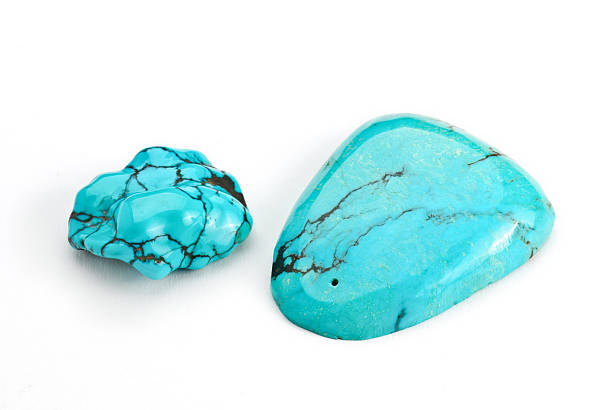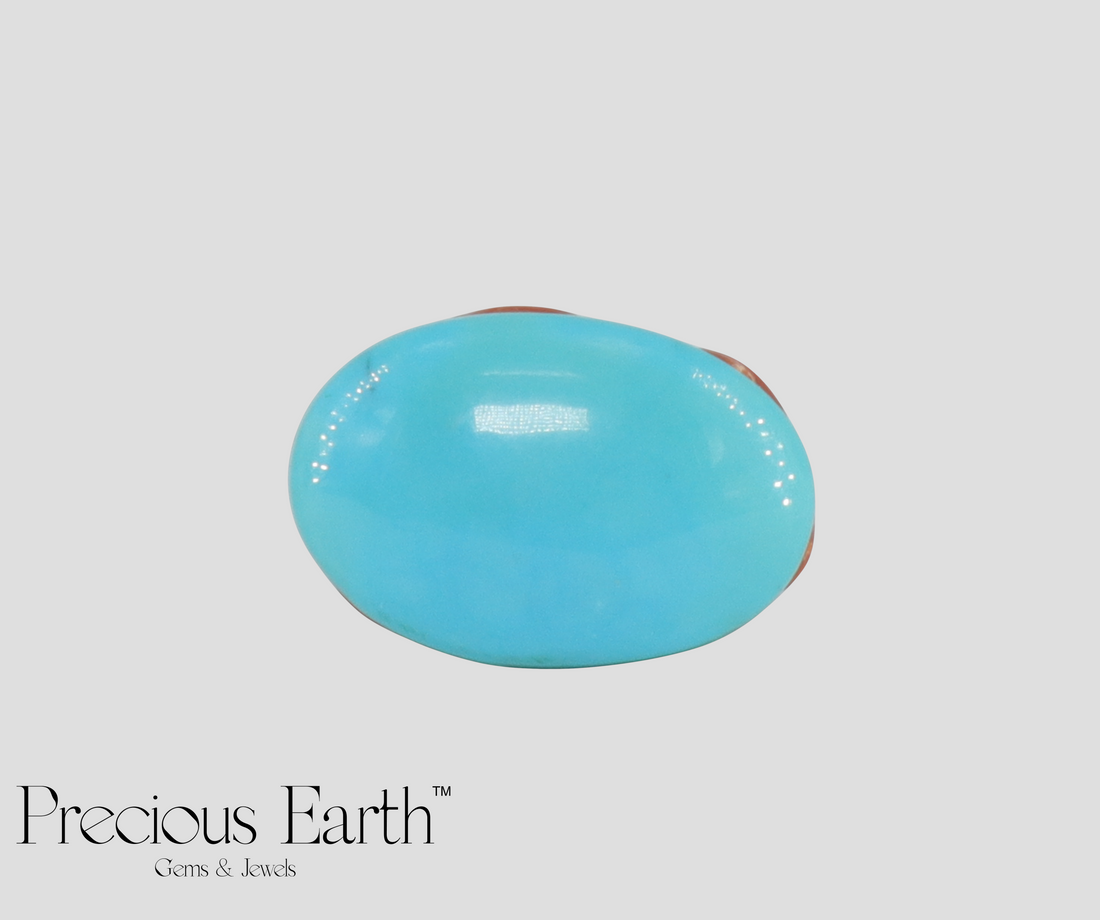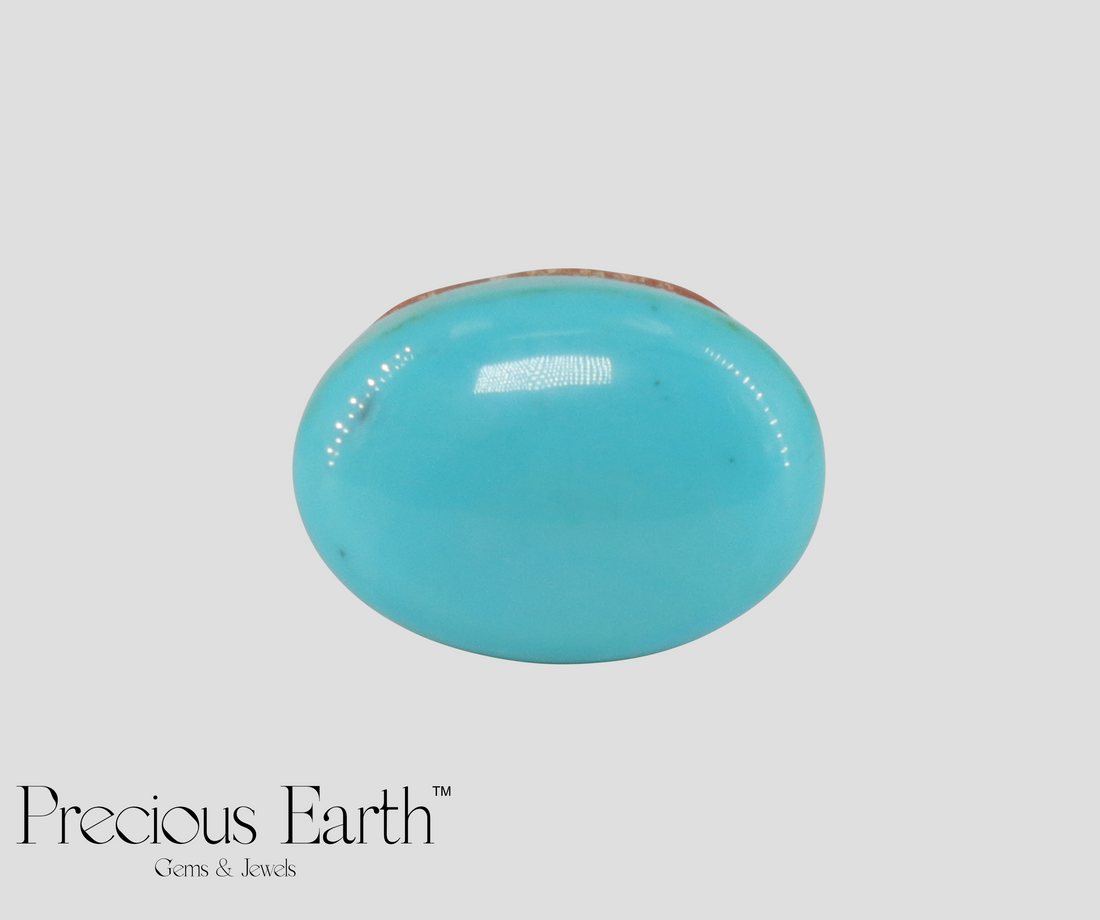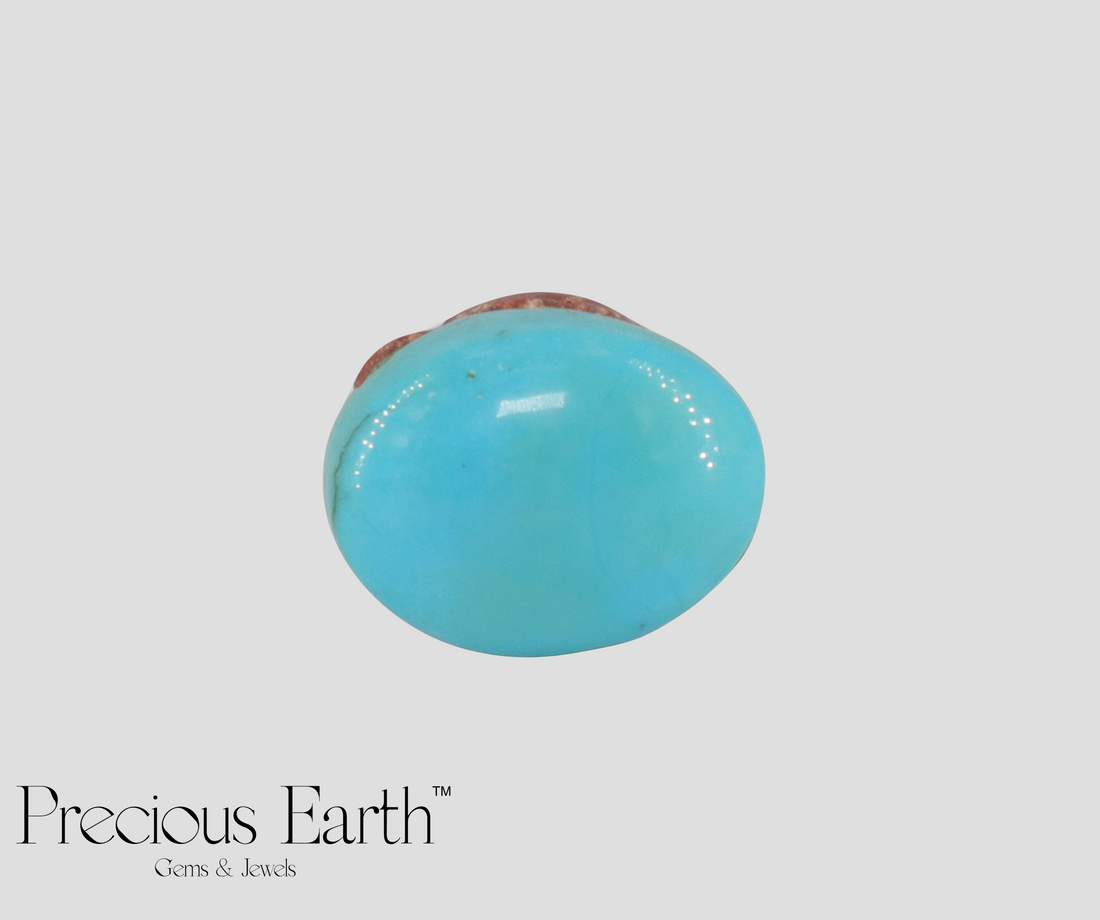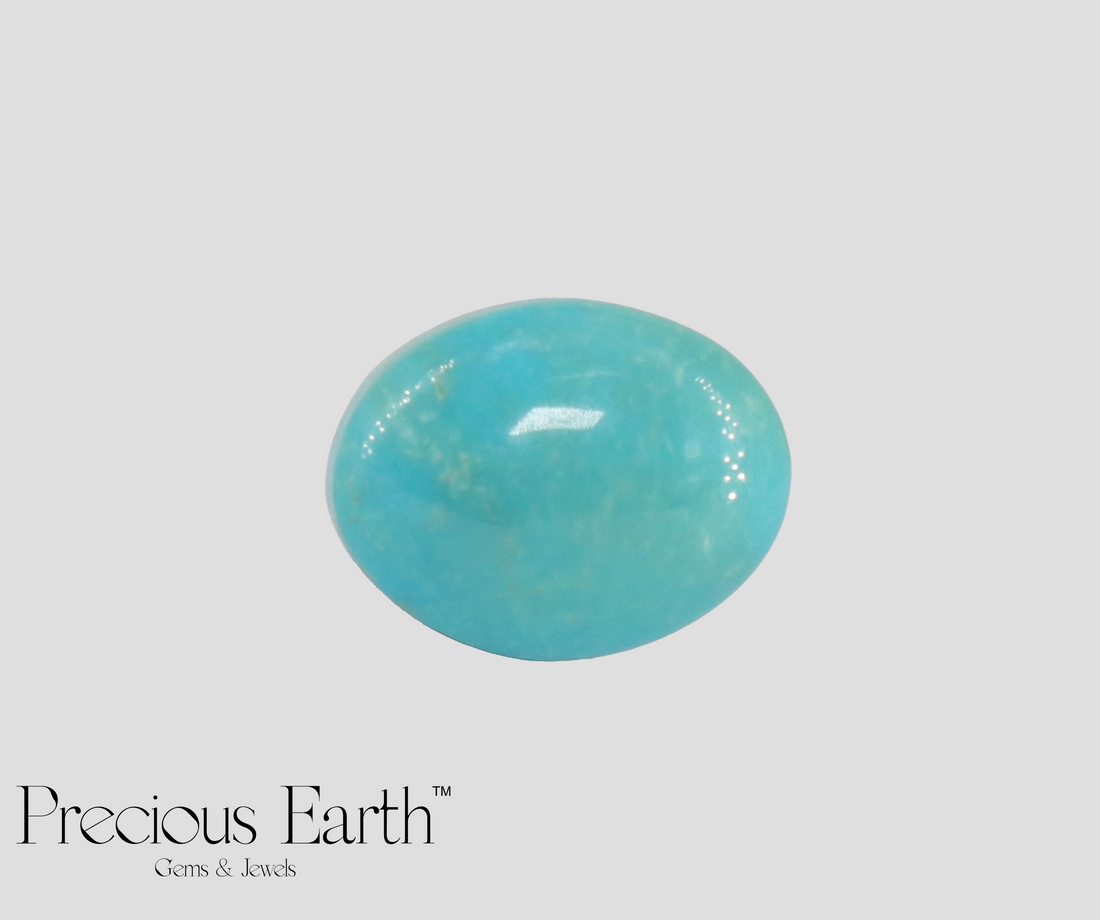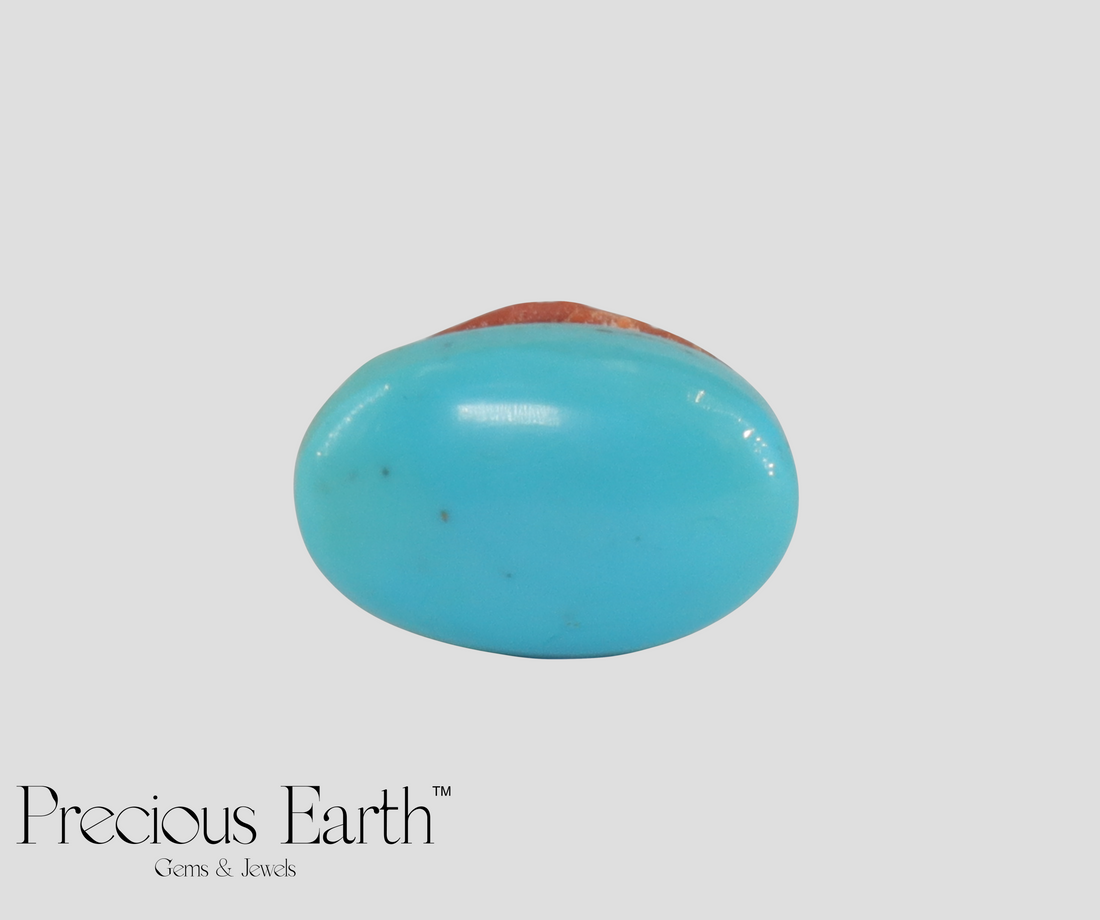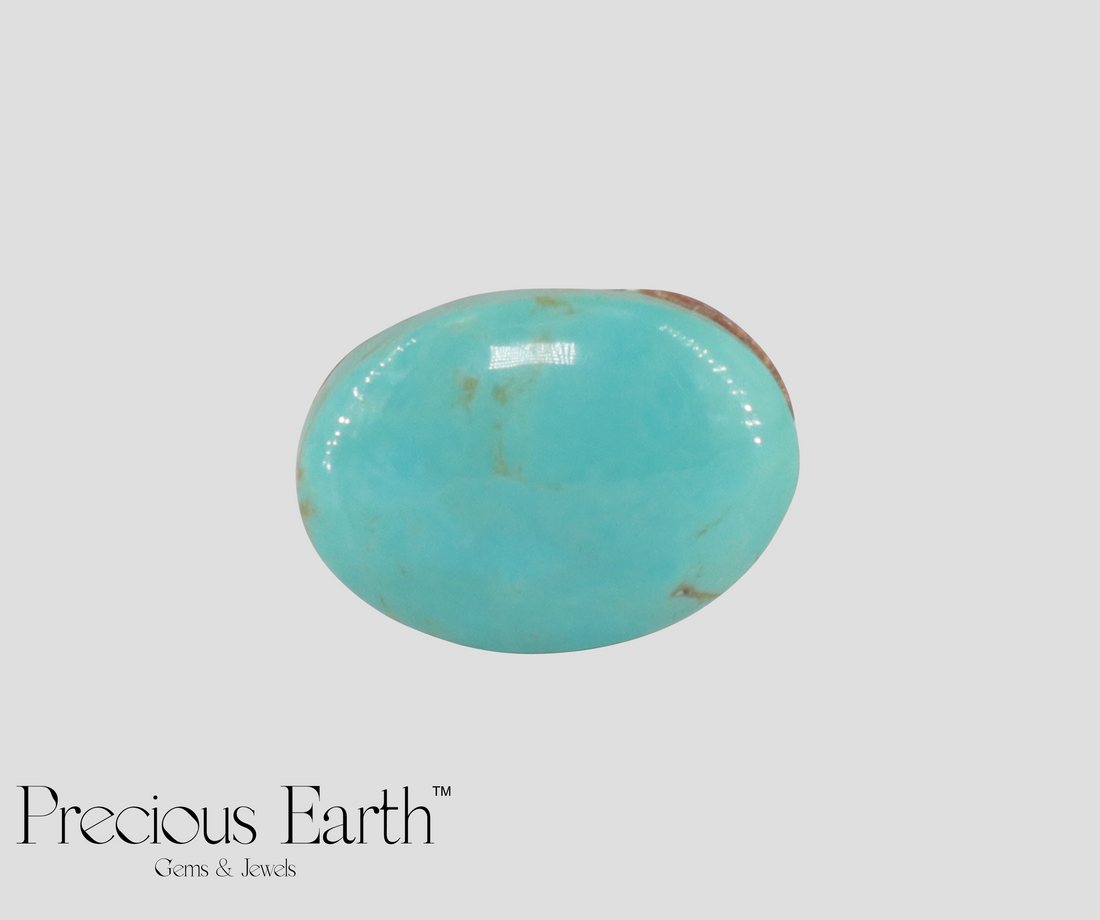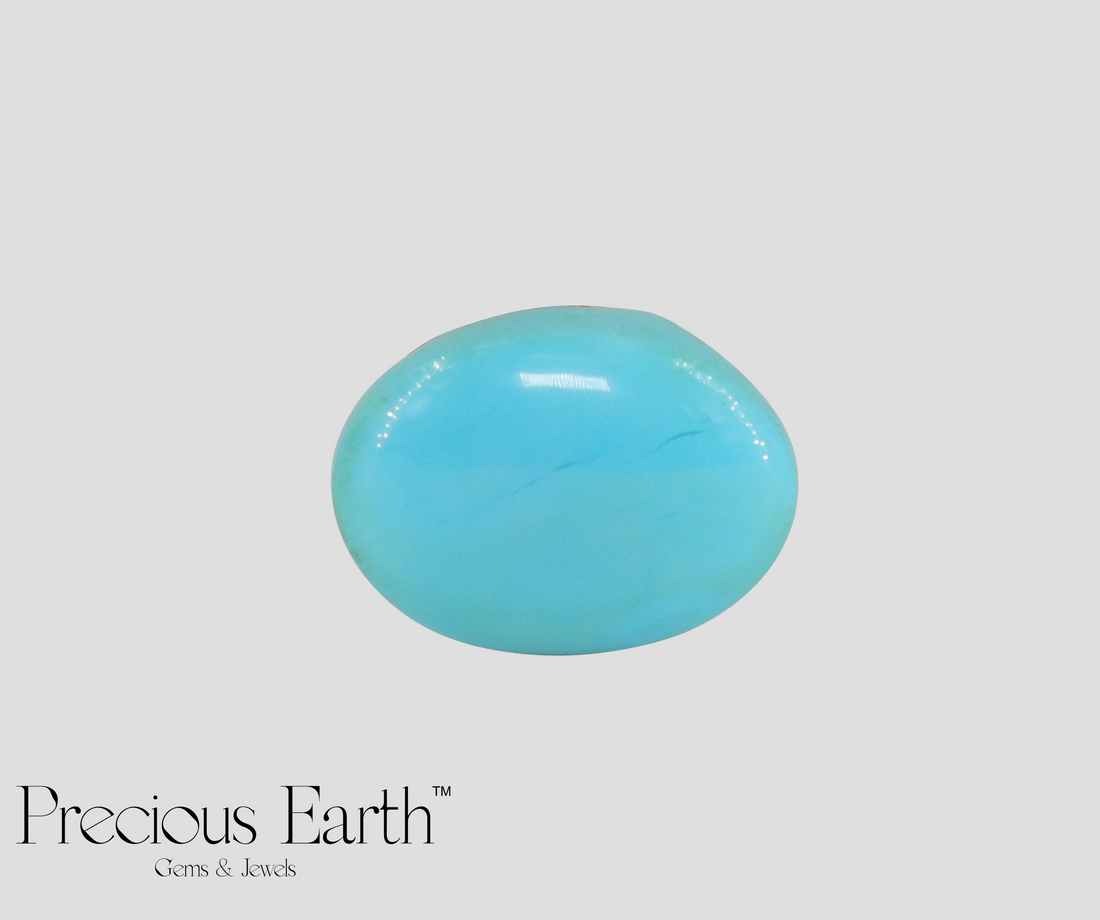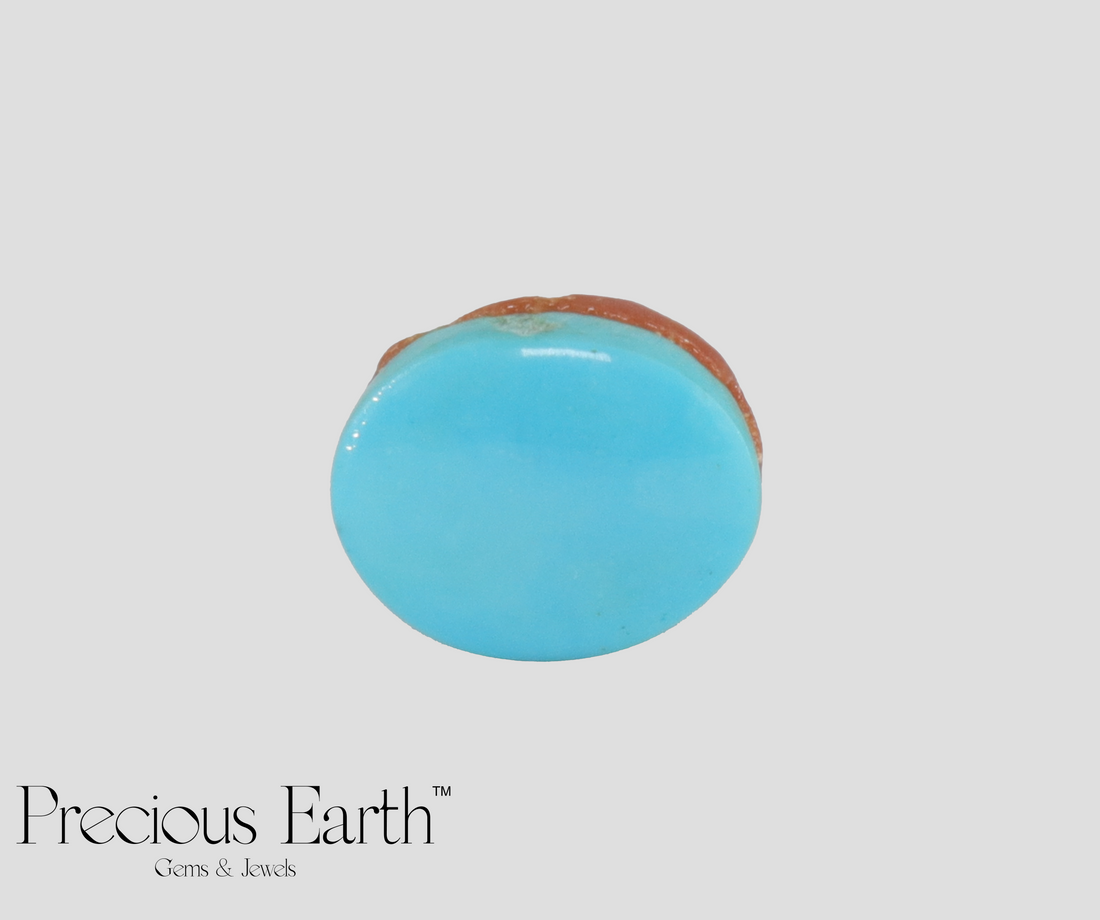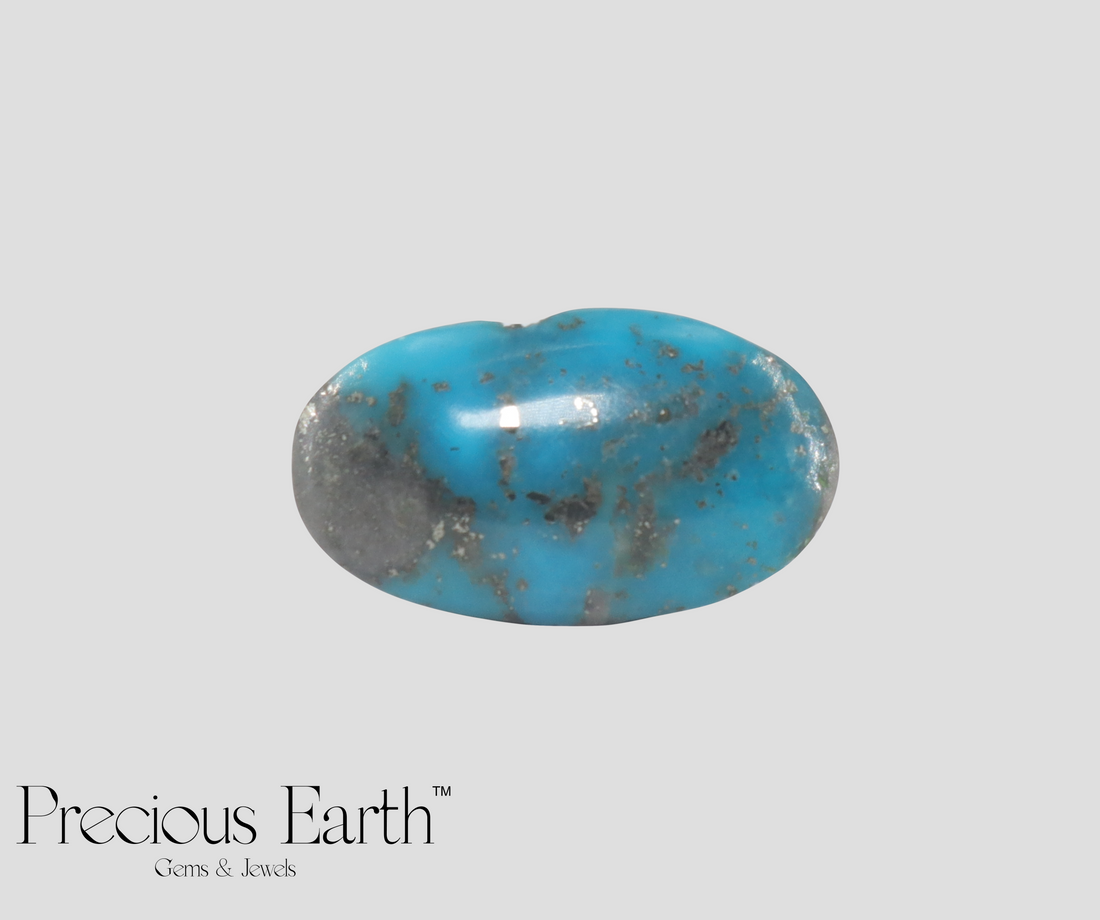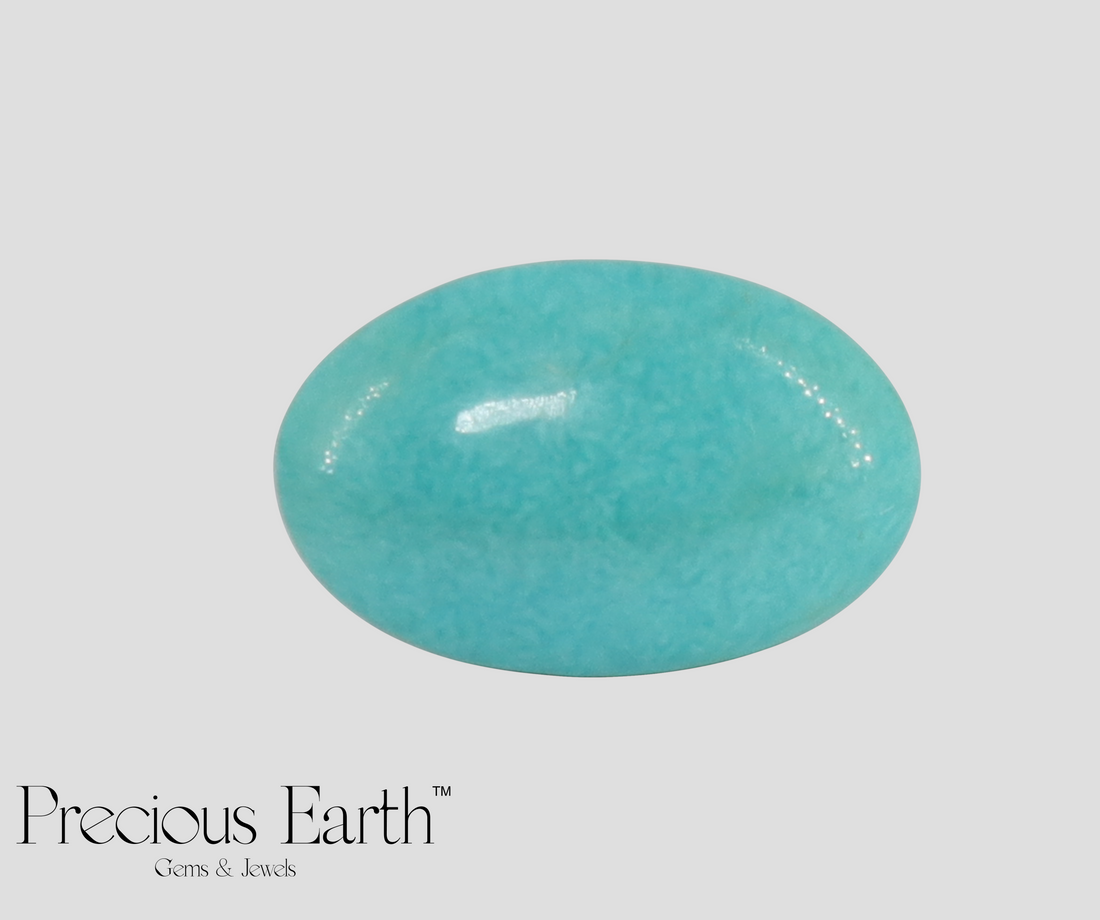For millennia, turquoise has captivated humanity with its striking blue-green hue and rich cultural significance. From ancient Egyptian pharaohs to Native American shamans, this mesmerizing gemstone has adorned royalty, warded off evil, and bridged the gap between earth and sky. But turquoise is far more than just a pretty face — it is a window into geology, history, and the human obsession with beauty.
Join us as we uncover the secrets of this enigmatic gemstone, one of the first to be mined by humans. We will explore its formation deep within the earth, trace its journey through various civilizations, and appreciate its enduring allure in the modern world. Whether you're a jewelry enthusiast, a history buff, or simply curious about the wonders beneath your feet, this guide will immerse you in the fascinating universe of turquoise.
1. Turquoise: Formation & Occurrence
Turquoise is a striking blue-green gemstone prized for millennia for its unique hue and opacity. Chemically, it is a hydrated phosphate of copper and aluminium [CuAl₆(PO₄)₄(OH)₈·4H₂O] that forms through secondary processes in arid regions. Acidic groundwater weathers rocks, leading to turquoise precipitation. Copper often comes from sulfides like chalcopyrite or carbonates like malachite, while aluminium derives from feldspar breakdown and phosphorus from apatite.

Rough turquoise
Natural turquoise is commonly found in highly altered volcanic rocks, filling voids and cracks, and is associated with iron oxides and limonite. The American Southwest is nearly exclusively linked with weathered copper sulfide deposits near potassium feldspar-rich porphyritic intrusions, sometimes containing alunite. Typically forming within 20 meters of the surface, natural turquoise can also occur deeper where secondary solutions penetrate further, or the water table is elevated. It usually appears cryptocrystalline and massive, forming veins, nodules, or botryoidal masses.
2. Where Is Turquoise Found?
Notable turquoise deposits exist in several countries across different continents. Significant occurrences are known in Asia in Russia, China, and Iran. Iran, in particular, is known for its high-quality turquoise, often referred to as "Persian turquoise" or "Irani feroza" in the trade, which is highly prized for its vibrant color and historical significance.
 Irani Feroza Stone or Persian Turquoise
Irani Feroza Stone or Persian Turquoise
The stone is also abundant in North America, particularly in the southwestern United States. Key turquoise-producing states in this region include Arizona, Colorado, Nevada, New Mexico, and the southern part of California. Turquoise mines in these locations offer unique varieties of turquoise, often prized for their specific color variations and matrix patterns.
3. The Colour Span of Turquoise
Turquoise exhibits a diverse color spectrum, ranging from iconic blue-green to unusual hues.
- Robin's Egg Blue: This classic shade is often associated with tranquillity and is a well-recognized color in turquoise. It typically refers to a bright, clear blue that is highly sought after in jewellery pieces like bracelets and earrings.
- Teal: Teal offers a bolder blend of blue and green is accurate. This color variation can add depth and richness to turquoise pieces.
- Mint Green: A refreshing, pale green tone, this variation provides a lighter alternative to the traditional blue-green palette.
- Lemon Turquoise: The existence of vibrant yellow shades, referred to as lemon turquoise, is indeed surprising to many. This variation is less common and can add an intriguing twist to the typical color range associated with turquoise.
- Sky Blue Turquoise: Sky blue turquoise, also known as Sleeping Beauty turquoise, is prized for its pure, vibrant blue color with little to no matrix. This is a stunning example of natural turquoise.
 Color range of Turquoise stones (Source: Gardens of the Sun)
Color range of Turquoise stones (Source: Gardens of the Sun)
4. Common Inclusions in Turquoise
Turquoise is a unique gemstone characterized by its vibrant colors and distinctive inclusions. The presence of inclusions can significantly influence the gemstone's appearance and value. Here are some common types of inclusions found in turquoise:
- Spiderweb Pattern: These are fine, dark lines that resemble a spider's web, often formed by limonite or other minerals. The black matrix is particularly sought after for its contrast against the turquoise blue.
- Patchy Designs: These are irregular shapes and patterns that vary in color, including brown and yellow, and are less uniform than spiderweb patterns.
- Pyrite Flecks: Turquoise can also contain small pyrite flecks, adding a metallic sparkle to the stone. These inclusions can enhance the gemstone's visual interest but, depending on their prominence and distribution, may affect its overall value.
- Chrysocolla Intergrowth: Chrysocolla, another copper-based mineral, can sometimes be found intergrown with turquoise. This can create a blend of colors and textures, further enhancing the stone's uniqueness.
- Other Mineral Inclusions: Turquoise stone may also include various other minerals, such as iron or aluminum compounds, which can influence its color. The blue color of turquoise is primarily due to copper, while green hues may indicate iron presence.

Spiderweb matrix on a turquoise
5. Common Treatments & Enhancements of Turquoise
Here are the common treatments associated with Turquoise stone:
- Stabilization: The most prevalent treatment involves impregnation with epoxy or resin to enhance durability and prevent color fading. Approximately 98% of turquoise on the market is stabilized.
- Compression: Created by molding small pieces of turquoise under extreme hydraulic pressure, this method utilizes otherwise wasted material, resulting in a more stable product, often combined with stabilization.
- Dyeing: Involves injecting color into the porous structure of turquoise to enhance or change its color, achieving vibrant hues not typically found in natural stones. However, without proper treatment, dyed stones may retain their color over time.
- Enhanced Treatments: Refers to stones treated with electrical currents and mineral compounds to improve durability and appearance without altering color, including methods like the Zachery Enhancement Method, which increases potassium content.
- Waxing & Oiling: These methods create a protective barrier around the stone from environmental damage but are less effective than modern stabilization techniques and can wear off over time.
| Mineral | Hydrous Phosphate |
|---|---|
| Colour Span | Blue, Greenish-blue, bluish-green |
| Popular Origins | Iran, USA, China, Egypt, etc. |
| Mohs Hardness | 5.00 - 6.00 (on a scale of 10) |
| Common Treatments | Dyeing, Waxing, Impregnation, etc. |
| Birthstone | December |
Turquoise - A Quick Snapshot
6. Evaluating the Quality of a Turquoise
Each of the following elements plays a crucial role in determining the overall value and appeal of a certified turquoise gem.
- Color: The most desirable turquoise color is vivid, even blue, often compared to the sky or a robin's egg. Green or yellow hues can lower the value, although some prefer these colors for certain designs. Purer, more saturated blues are the most valuable.
- Pattern: Turquoise can be semi-translucent to opaque, displaying colors from light to medium blue or greenish-blue. It often features a mottled appearance with dark patches and veins of matrix. Spiderweb turquoise is noted for its fine, web-like matrix patterns.
- Cut: Turquoise is often cut into cabochons, beads, and inlays. A cabochon cut, with its smooth, domed surface, showcases the stone’s features beautifully, enhancing its natural appeal without the distraction of facets. High-quality blue turquoise, sometimes with Persian or Arabic engravings and gold inlays, is especially prized. Lower-quality turquoise is tumbled into "nuggets," which, though less refined, remain popular in various jewellery designs such as bracelets and necklaces. Still, the elegance of a well-crafted cabochon is often unmatched.
- Carat Weight: Turquoise is measured in carats, with five carats equating to one gram. This gemstone comes in various sizes. Even tiny stones are commonly used in Native American jewelry. Larger pieces of turquoise rough are particularly sought after for carvings. Regardless of size, the most important factor in determining value is the quality and uniformity of the color. A consistent and vibrant hue will significantly enhance the stone's overall worth, making it a key consideration for any buyer.

7. How Much Does Turquoise Cost?
High-quality turquoise is rare, with only 25% of mined material considered jewelry quality. From every 100 pounds (45 kilograms) of turquoise, only 1 pound (0.4 kilograms) is high-grade. In general, gem-quality turquoise sells for $20 to $200 per carat, with prices even higher for premium qualities. This highlights the unique value of high-quality turquoise in the gemstone market, driven by its rarity and desirability.
8. Turquoise in Astrology
Turquoise, also known as Firoza, is revered in astrology for its unique properties linked to the planets Jupiter and Ketu, and with the Sagittarius zodiacs. Here are the astrological benefits associated with wearing turquoise, which is also the birthstone of December:
- Balance Between Jupiter & Ketu: Turquoise helps to balance the influences of Jupiter, which represents divine grace and luck, and Ketu, known for causing internal distortions and challenges. This balance can lead to a more harmonious life experience, reducing self-created obstacles and enhancing positive outcomes.
- Emotional Stability: The nurturing properties of turquoise can help individuals overcome anxiety, panic attacks, and depression. It provides emotional support during turbulent times, making it a comforting presence for those in distress.
- Spiritual Growth: Like blue quartz, Turquoise facilitates spiritual development and self-realization, guiding individuals on their spiritual journeys.
- Support for Creative Endeavors: Individuals engaged in creative fields—such as art, music, and literature—can benefit from turquoise's calming and inspiring energies. This gemstone enhances creativity and imagination, making it a valuable companion for artists and creators.
- Protection Against Negativity: One of the most celebrated properties of turquoise is its ability to protect against negative energies and ill-wishing. It is said to absorb negativity and safeguard the wearer from the evil eye, jealousy, and other harmful influences.
- Chakra Healing: Turquoise is known to harmonize all chakras, particularly the Throat (Vishuddhi) and Heart (Anahata) chakras. This balancing effect promotes the smooth flow of energy, enhancing communication and emotional well-being.
Conclusive Reflections
Turquoise stands out not only for its stunning beauty but also for its rich history and cultural significance. Whether you are drawn to its vibrant hues or its metaphysical properties, this gemstone offers a unique connection to the earth and its ancient traditions. By incorporating turquoise into your life, you can embrace its beauty and the positive energies it embodies.
To explore a diverse selection of exquisite turquoise stones and learn more about their significance, visit Precious Earth. Discover how you can bring the allure of turquoise into your collection today!

